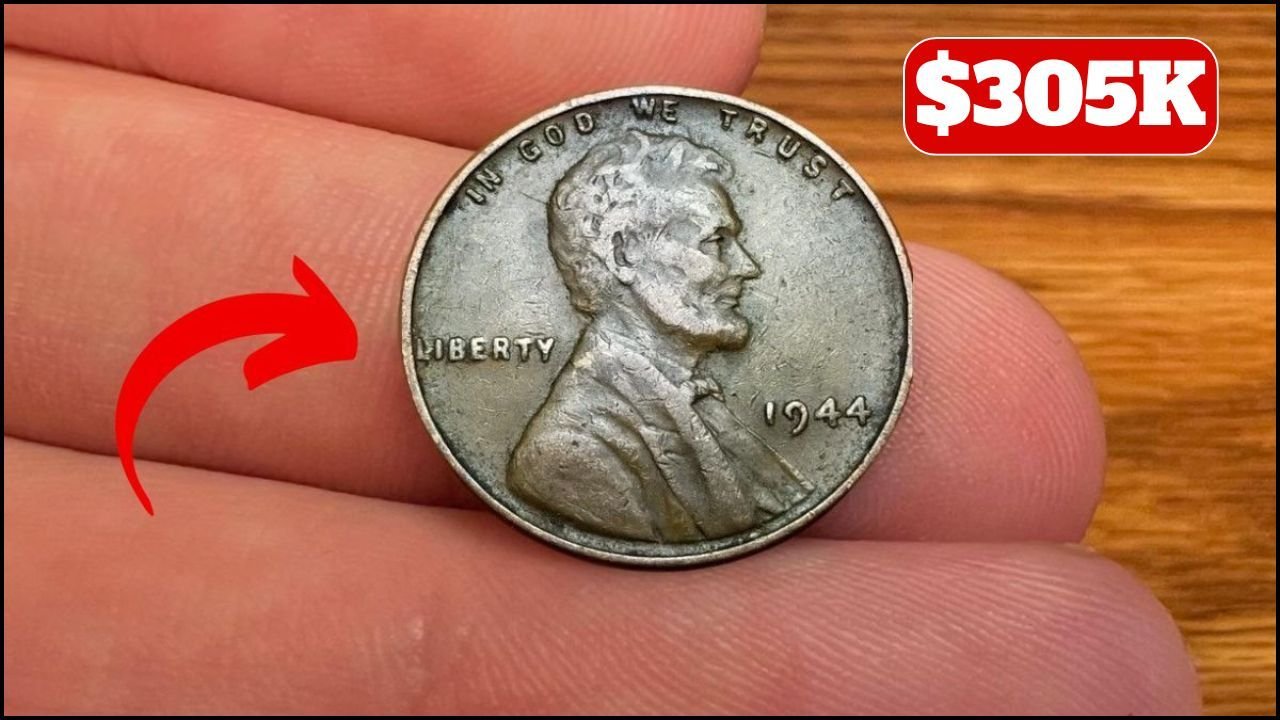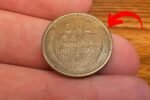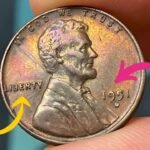To most people, a penny doesn’t seem like much—just a small copper coin you toss in a tip jar or leave in your car’s cup holder. But what if that humble coin turned out to be worth a small fortune? That’s exactly the case with a Lincoln Wheat Penny that recently sold for a staggering $305,000, stunning the numismatic world and igniting new excitement among collectors and casual coin holders alike.
Believe it or not, this valuable coin might still be hiding in plain sight—tucked away in a forgotten drawer, resting at the bottom of a piggy bank, or floating around in your everyday pocket change. So, how does a penny become so valuable? Let’s dive in.
What Makes the Lincoln Wheat Penny So Special?
The Lincoln Wheat Penny, first minted in 1909, features President Abraham Lincoln on the front and two wheat stalks on the reverse—hence the name. This design remained in use until 1958, after which the Lincoln Memorial replaced the wheat design. Though millions were produced, only a few carry high collector value due to rarity, condition, and minting errors.
The $305,000 Wheat Penny is believed to be one of the rarest varieties—most likely a 1943 copper penny, mistakenly struck in copper when pennies that year were supposed to be made from steel due to wartime metal conservation during World War II.
Key Details: The $305K Lincoln Wheat Penny at a Glance
| Feature | Details |
|---|---|
| Coin Type | Lincoln Wheat Penny |
| Estimated Value | $305,000 |
| Notable Years | 1909-S VDB, 1943 copper |
| Metal Composition | Mostly copper (specific to the year) |
| Error Types | Misstrike, wrong metal, or double die errors |
| Condition Importance | Mint state or near-perfect condition |
| Collector Demand | Extremely high |
| Still Circulating? | Rare, but possible |
Why Are Some Lincoln Wheat Pennies Worth So Much?
Several factors can turn an ordinary-looking penny into a jackpot:
- Rarity: Coins like the 1909-S VDB had extremely limited mintage—only 484,000 were produced, making them a top target for collectors.
- Minting Errors: Some Wheat Pennies were minted on the wrong metal, struck off-center, or feature doubled inscriptions—known as double die errors—which significantly raise their value.
- Historical Significance: Being from a key year, such as the first release or a wartime anomaly like 1943, makes certain pennies more desirable.
- Condition: Coins preserved in near-mint or “uncirculated” condition are valued much higher than worn, circulated ones.
The now-famous $305,000 Lincoln Wheat Penny is believed to be one of the few 1943 copper pennies. That year, the U.S. Mint used steel-coated zinc for pennies to conserve copper for the war effort. However, a few copper planchets accidentally got into the production line, creating an ultra-rare batch of pennies that have become legendary.
Where Could You Find a Lincoln Wheat Penny?
You don’t need to be a seasoned coin collector to stumble upon one of these treasures. In fact, some of the most valuable Lincoln Wheat Pennies have been found in the most unexpected places:
- Old coin jars or piggy banks in attics or basements
- Estate sales, garage sales, or flea markets
- Loose change received from everyday purchases
If the coin has wheat stalks on the back and was minted between 1909 and 1958, it’s worth a closer look—literally and figuratively.
How to Check if You Have a Valuable Lincoln Wheat Penny
Here are some quick steps to help you identify a potentially rare or valuable penny:
- Check the date: Lincoln Wheat Pennies from before 1959 are your best bet.
- Inspect the mint mark: A small “S” (San Francisco) or “D” (Denver) under the date could indicate rarity.
- Look at the back: If it has two wheat ears, it’s a Wheat Penny.
- Spot any oddities: Misspellings, doubling in text, wrong color, or off-center images could point to a minting error.
⚠️ Important: Never clean a coin you suspect might be valuable. Cleaning can scratch the surface and reduce its value dramatically. Always have it appraised in its original condition by a reputable coin dealer or numismatist.
FAQs: Lincoln Wheat Penny Worth $305,000
Q1: What year is the $305,000 Lincoln Wheat Penny from?
Most likely 1943, when a few pennies were mistakenly struck in copper instead of steel.
Q2: Why is the 1943 copper penny so rare?
During WWII, copper was needed for ammunition and wiring, so steel was used instead. Only a handful of copper pennies were minted that year by mistake.
Q3: Can I still find one in circulation?
It’s rare, but possible. Several valuable pennies have been discovered in circulation or from old family coin collections.
Q4: How do I know if my penny is valuable?
Check the year, mint mark, and for any minting errors. If in doubt, consult a coin expert.
Q5: Should I clean the coin before selling it?
No. Cleaning can ruin a coin’s surface and decrease its value. Let a professional evaluate it in its natural state.
Final Thoughts
The idea that a single Lincoln Wheat Penny could be worth over $300,000 might sound unbelievable, but it’s very real. These iconic coins represent more than just loose change—they’re pieces of American history that could turn into life-changing discoveries for lucky finders.
So next time you get change back from a store or go through an old coin jar, take a closer look. That unassuming copper coin might just be your golden ticket.
Some Important Link
| Telegram Group | Click Here |
| WhatsApp Group | Click Here |
| Home Page | Click Here |















